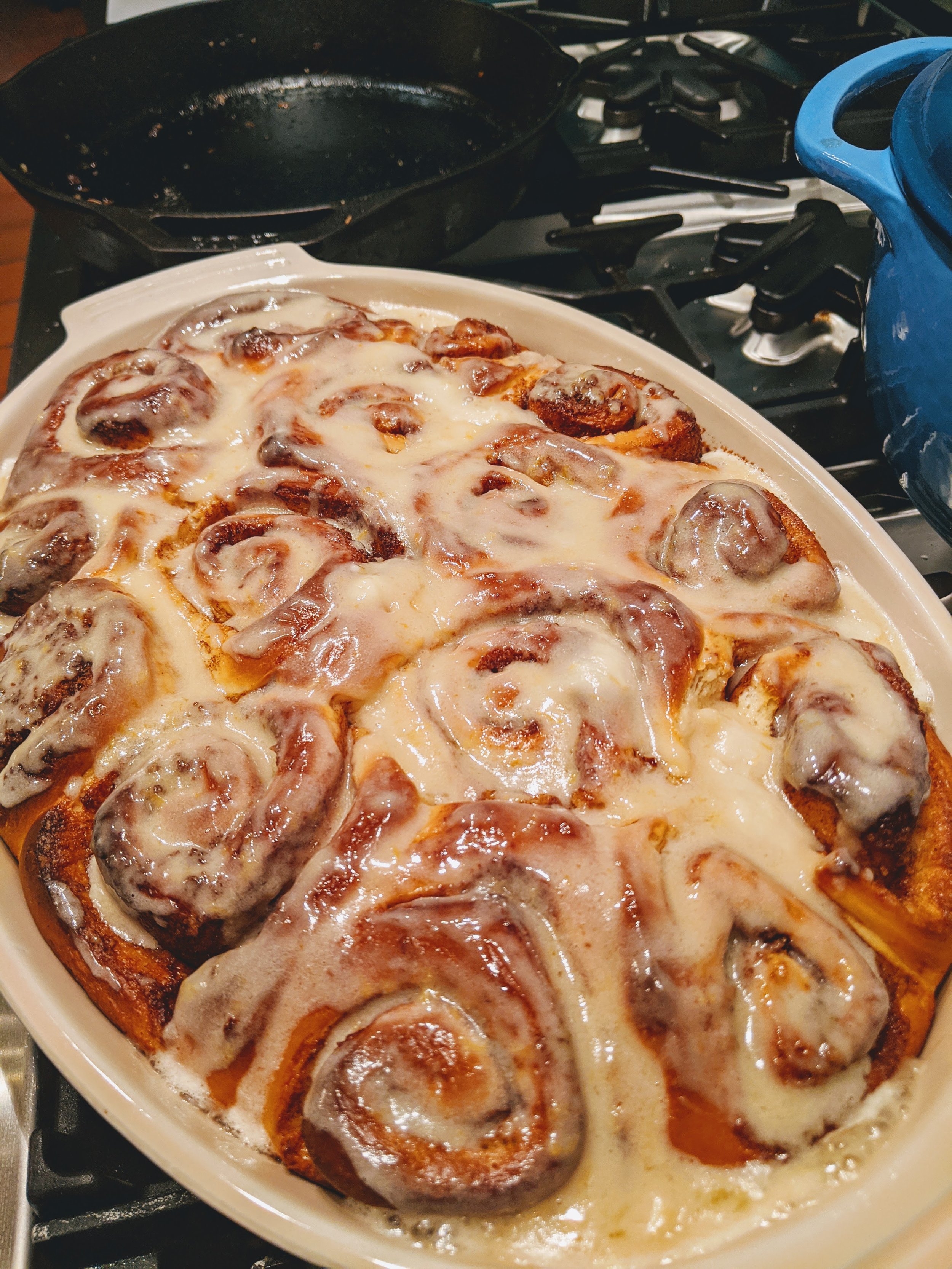TABLE: A Year in Sourdough
I didn’t catch the sourdough wave when everyone else did.
While the world was knee-deep in starter jars and crusty loaves, I was quietly watching—hesitant, skeptical, maybe a little too tired to begin something that required daily devotion. By the time I finally felt ready, the frenzy had passed. People had gone back to work, the loaves had stopped showing up in my feed, and the world had moved on.
That’s when I knew it was the perfect time to start.
Part of why I turned to sourdough was simple: I wanted more control over what I was putting into my mouth. After a long stretch of mostly carnivore and keto eating, coming back to bread felt like breaking a rule I had written for myself. But I was in a place where joy mattered more than restriction. I was feeling good—but not necessarily better—and a fun project felt more healing than another food rule to follow.
I found a local Texas flour mill specializing in ancient grains—einkorn, spelt, rye—and the idea of working with something elemental, slow, and alive felt like the kindest thing I could do for my body. I didn’t want fast bread. I wanted fermentation. I wanted to feed the good, the wild, the living part of myself. And sourdough offered that: a process where time isn’t an enemy, and the body is trusted to know the difference between nourishment and noise.
Testing different flours felt like working with textiles. Each dough had its own feel, its own weight and stretch. Every loaf was just different enough to keep my interest. The anticipation of that final rise, and then the ultimate bake—it was like a surprise birthday party every time.
I’ll admit it: some bakes were flat. A few were nearly shapeless. But they were always edible. Always forgiving.
The one I forgot that came out wonky but still delicious.
That’s the thing about sourdough—it wants to work with you. The more I teased the dough, the more it reacted. The more I nurtured it and watched it, I swear—it knew I was there. It became a relationship, not a recipe. A rhythm. A quiet dance.
And on the days I completely forgot it, it took over for me—like it was saying, “I got you. I’m going to be wonky today, but I’ll rise. And you’ll still be happy with me.” It never let me forget it was there. The scent, faint and familiar, was always calling me back.
My Sourdough Notes
Freeze-dried starter: fail.
Homemade attempts: failed twice.
Third time? Magic. It caught, and I never looked back.
Flours:
Einkorn: almost too soft, but had great flavor
Spelt: my least favorite to work with and eat
Rye: never “rye” enough for the kind of hearty German-style loaves I love
The gems: rare ancient grains from Mexico, grown in small batches on local farms—limited, earthy, and unforgettable
My Wins:
Best scoring: a leaf motif that cracked beautifully—and once, my initials, like signing a piece of cloth
A rich, chocolate cinnamon roll with sour cream frosting that I still dream about
Buttermilk sourdough naan—soft, tangy, and perfect with everything
Overnight waffles that became a weekly comfort ritual
My Flops:
Overwatering and underhydrating—both ruined the rise
Baked too long and ended up with dry, dense loaves
Forgot to remove the lid after the first 20 minutes—too soft and pale
Didn’t score deep enough—loaves burst unpredictably.
Cinnamon rolls
My best scoring of a chocolate cherry and pecan loaf.
Sourdough naan
After about six months, my starter developed a scent that I can only describe as softly sweet—almost fruity, like ripe orchard air. It was subtle but distinct, and strangely personal. If I had to bottle a scent made just for me, I think it would be this.
Because really… it is a part of me, isn’t it?
It lives because I feed it.
It changes as I change.
It reflects the microbes in my home, the air I breathe, the flour I choose, the hands I use.
My starter is, in a way, my quietest legacy. And like all good companions, it never demands—only offers. Once I had a bubbly starter, I thought the hard part was over—but learning the dough was a journey of its own. I began with a no-knead recipe, and it worked, but not deeply. Over time I realized: the loaves I tended more—physically and energetically—rose better. They remembered being touched.
Some people say salt doesn’t matter. For me, it was best mixed in with the flour. But the true lesson was in texture. Too wet? It sank. Too dry? It tightened up and gave me crusty indifference. Everything mattered—and yet, it was never a perfect science.
That’s what I love about sourdough. It’s full of contradictions. It’s structured and free. Demanding and forgiving. Kind of like life, huh? Sourdough, like so many things worth loving, forgives you for being human.
It reminds you that nourishment doesn’t come from control—it comes from care.
Even if the loaf isn’t perfect, it’s still enough.
Still warm.
Still risen.
Still home.
And it would never let me forget it was there. The scent, faint and familiar, was always calling me back.
Sometimes we think the idea of home has to be something old, or rooted in childhood. But the truth is—every day, we can build new memories. We can layer them, loaf by loaf, on top of all the things we already hold dear.




























